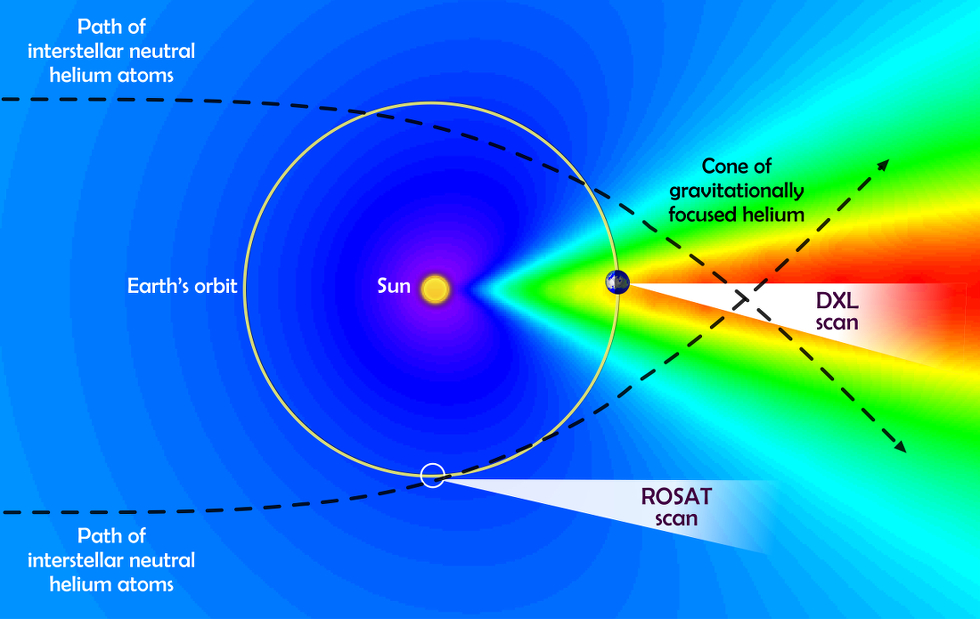
 Credit: NASA's Goddard Space Flight Center
Credit: NASA's Goddard Space Flight Center
An Exchange with the Sun
X-ray observations stretching back nearly 40 years led to the discovery of something unexpected: a huge bubble of hot gas surrounding the solar system. Dubbed the "Local Hot Bubble", the existence of this hot bubble could indicate that the solar system is currently moving through a cavity carved out by a supernova explosion. However, subsequent observations using the ROSAT satellite observatory and others indicated that the low-energy X-ray emission believed to come from the Local Hot Bubble could perhaps be produced instead by the solar wind, in a process known as "solar-wind charge exchange". This process occurs when atoms in the Sun's wind exchange electrons with one another, and X-rays are produced as the electrons move from high energy orbits around the atomic nucleus to lower ones. Some astronomers suggested that this charge exchange process could be responsible for all the low-energy emission near the solar system, calling into question the existence of the Local Hot Bubble. This issue has recently been resolved by an X-ray instrument on a five minute flight aboard a sounding rocket. The instrument, called DXL (for Diffuse X-ray emission from the Local Galaxy), took sensitive X-ray measurements of a region of space in which the density of helium atoms is enhanced, due to focussing of the helium by the Sun's gravity (as illustrated in the diagram above). The diagram shows the pointing direction of DXL in the cone of focussed helium, and also the pointing direction of earlier low-energy X-ray observations with the ROSAT X-ray observatory. The DXL observations show that solar-wind charge exchange only accounts for 40% of the soft X-ray emission near the earth. The Local Hot Bubble lives!
Published: March 25, 2024
<
HEA Dictionary ● Archive
● Search HEAPOW
● Other Languages
● HEAPOW on Facebook
● Download all Images
● Education ● HEAD
>

Each week the HEASARC
brings you new, exciting and beautiful images from X-ray and Gamma ray
astronomy. Check back each week and be sure to check out the HEAPOW archive!
Page Author: Dr. Michael F. Corcoran
Last modified Monday, 01-Apr-2024 07:49:19 EDT


